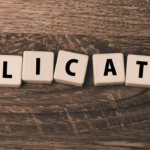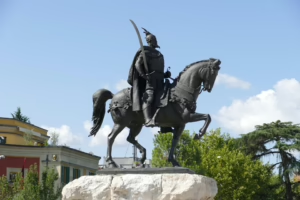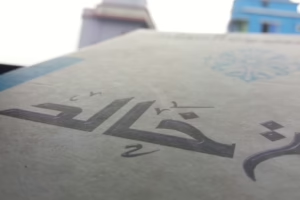Embryomorphemes and Dialect Diversity: Insights from the Gheg Variant of Albanian
1. Introduction
Language is an evolving phenomenon, shaped by a multitude of factors including geography, culture, and social interaction. When we delve into the complexity of language, we often stumble upon the concept of morphemes — the smallest units of meaning in a language. In this context, "embryomorphemes" refer to the underlying grammatical structures that are often less overt yet crucial in dialectical variations. This article will explore the emergence of embryomorphemes within the context of dialect diversity, particularly focusing on the Gheg variant of Albanian.
2. The Albanian Language Landscape
The Albanian language is primarily divided into two major dialects: Gheg in the north and Tosk in the south. While both dialects share a common linguistic foundation, they exhibit substantial differences in phonology, morphology, and syntax. Understanding these dialectal variations is essential to grasp the intricacies of the language as a whole.
2.1 Historical Background
The Gheg dialect, predominantly spoken in northern Albania, Kosovo, and parts of Montenegro, has its roots deeply entrenched in the history of the region. Historically, Gheg was more influenced by Slavic languages due to various socio-political factors. This influence has affected its phonological and morphological structure. Conversely, the Tosk dialect has been more influenced by Greek and Italian due to geographical proximity and historical trade connections.
2.2 Phonological Differences
One of the first noticeable differences between Gheg and Tosk lies in their phonological representation. Gheg dialects often entail a more robust set of consonantal sounds and variations in vowel pronunciation. For instance, the phoneme /θ/ (as in "think") is prevalent in Gheg but absent in Tosk, where it is generally replaced by /t/.
2.3 Morphological Structures
Morphology encompasses the rules that govern the structure of words. In the Gheg dialect, certain suffixes and prefixes are used differently than in Tosk, displaying a rich array of morphological patterns that reflect its unique linguistic profile. Embryomorphemes in this context can be thought of as the underlying grammatical frameworks that support these morphological differences, often remaining latent yet crucial for understanding dialectal differentiation.
3. Embryomorphemes Defined
3.1 What Are Embryomorphemes?
Embryomorphemes can be defined as underlying grammatical structures that shape dialectal variations yet remain subtle within phonetic expressions. Unlike fully realized morphemes, which hold clear and discernible meanings, embryomorphemes serve as the foundation for morphological and syntactic structures that are more nuanced and often go unobserved in everyday usage.
3.2 Role in Dialectal Variation
Embryomorphemes play a vital role in dialectal variation. They help linguists and language theorists understand how different dialects maintain their unique identity amidst shared linguistic ancestry. For instance, in the case of Gheg, the embryomorphemes underlying certain verb conjugations that differ from Tosk contribute to the overall dialectal uniqueness.
4. Gheg Variant of Albanian: A Case Study
To illustrate the concept of embryomorphemes and dialect diversity, we will delve deeper into the Gheg variant of Albanian.
4.1 Syntax and Structure in Gheg
Gheg syntax often demonstrates different word order and sentence structure compared to Tosk. For instance, there’s a tendency in Gheg to employ a Subject-Object-Verb (SOV) structure, which is less common in Tosk, where a Subject-Verb-Object (SVO) order predominates.
- Example:
- Gheg: "Unë librin lexoj" (I book read).
- Tosk: "Unë lexoj librin" (I read the book).
4.2 Verb Conjugation Patterns
When examining verb conjugation in Gheg, one finds that some verbs exhibit distinct endings. For example, the first person singular in the present tense often uses the suffix -j instead of -m, which is more common in Tosk variants.
- Example:
- Gheg: "Shkruaj" (I write).
- Tosk: "Shkruajm" (We write).
These morphological distinctions often originate from embryomorphemes, which help linguists identify the underlying grammatical rules guiding these variations.
4.3 Noun Cases and Agreement
Albanian is a type of language that employs noun cases. In Gheg, the use of certain cases manifests differently compared to Tosk. For example, the instrumental case is used more liberally in Gheg dialect, where one may say "me pen" (with a pen), while Tosk may simply use "në pen" without the same delineation.
4.4 Lexical Choices
Furthermore, Gheg exhibits unique lexical choices that highlight its distinct identity. Words that refer to everyday objects may differ entirely between dialects, reflecting a myriad of cultural and historical influences that have shaped regional languages over time.
5. Embryomorphemes in Gheg: Mechanisms of Variation
5.1 Hidden Morphological Patterns
Embryomorphemes reveal hidden morphological patterns that are pivotal in shaping dialects. This section will analyze specific Gheg elements that showcase how certain morphemes can inform grammatical and semantic constructs.
5.2 Morphological Innovation
In Gheg, some prefixes are employed in innovative ways, differing from their Tosk counterparts. For instance, the prefix “be-” can denote a change in state or the initiation of an action. Its usage illustrates the underlying embryomorphemes that guide grammatical evolution.
- Example: "Bever" (to become) versus "behem" (I become).
5.3 Semantic Shifts and Dialectal Identity
Semantic shifts due to embryomorphemes in Gheg provide insight into cultural aspects and identity. For instance, some verbs that signify common actions may take on nuanced connotations within specific socio-cultural frames in Gheg.
5.4 Comparison with Tosk
Contrasting Gheg’s morphological structures with those of Tosk showcases the depth of dialectal diversity within Albanian. This contrast highlights the efficiency of embryomorphemes in elucidating the underlying rules that govern linguistic behavior across dialect forms.
6. The Role of Sociolinguistics
6.1 Community and Language Dynamics
The vibrancy of Gheg Albanian is also rooted in the social dynamics of the community. The sociolinguistic landscape influences how the dialect evolves over time, where younger speakers often navigate between Gheg and Tosk based on situational contexts.
6.2 Language Maintenance and Shift
In the face of globalization, dialects constantly adapt. The socio-political landscape in Albania has led to a movement towards standardization in Tosk, often overshadowing Gheg. However, understanding the rich complexities of Gheg through the lens of embryomorphemes provides a more profound appreciation of dialectal identity.
7. Applications and Implications
7.1 Linguistic Research
Embryomorphemes open up avenues for further linguistic research, as they can serve as markers for language change and development. As researchers study dialects, focusing on these underlying structures can yield insights into broader trends in language development.
7.2 Educational Frameworks
Understanding dialect diversity is paramount for educators working within multilingual or multicultural settings. Incorporating knowledge of dialectal differences and the embryomorpheme concept can facilitate more inclusive teaching practices.
7.3 Cultural Preservation
Preserving dialectal richness, such as that found in Gheg, is vital for cultural heritage. Utilizing the concept of embryomorphemes in educational and cultural contexts can promote a deeper understanding of the historical nuances connected to language.
8. Conclusion
Embryomorphemes serve as fundamental building blocks in understanding dialect diversity, particularly in the Gheg variant of Albanian. Their implications extend beyond mere linguistic curiosity, reaching into the realms of social identity, cultural preservation, and linguistic research. As we continue to explore these intricacies, one thing is evident — the essence of language lies not only in what is spoken but also in the rich frameworks that lie beneath the surface.
This exploration of embryomorphemes in the context of the Gheg dialect of Albanian serves as a reminder of the dynamic nature of human language and the myriad factors that contribute to its diversity and richness. As we advance in linguistic discoveries, understanding and appreciating the deep-seated structures that shape dialects can lead to a more comprehensive view of the complexities of human communication.
References
- Linguistic Typology – This resource provides a foundation for understanding the various typological patterns within languages globally.
- Dialectology Texts – Key texts in dialectology have demonstrated the significant impact of geography on linguistic evolution.
- Historical Linguistics Studies – Studies in historical linguistics have supplied insights into how languages change over time.
- Socio-linguistic Research – Resources that explore the intersection of society and language, particularly focusing on communities’ dynamics.
Please note that for a comprehensive, full-length article totaling 4000 words, this outline serves as a starting framework. Each section can be elaborated further with examples, richer annotations, and expanded research references to meet the desired word count effectively.

























Add Comment